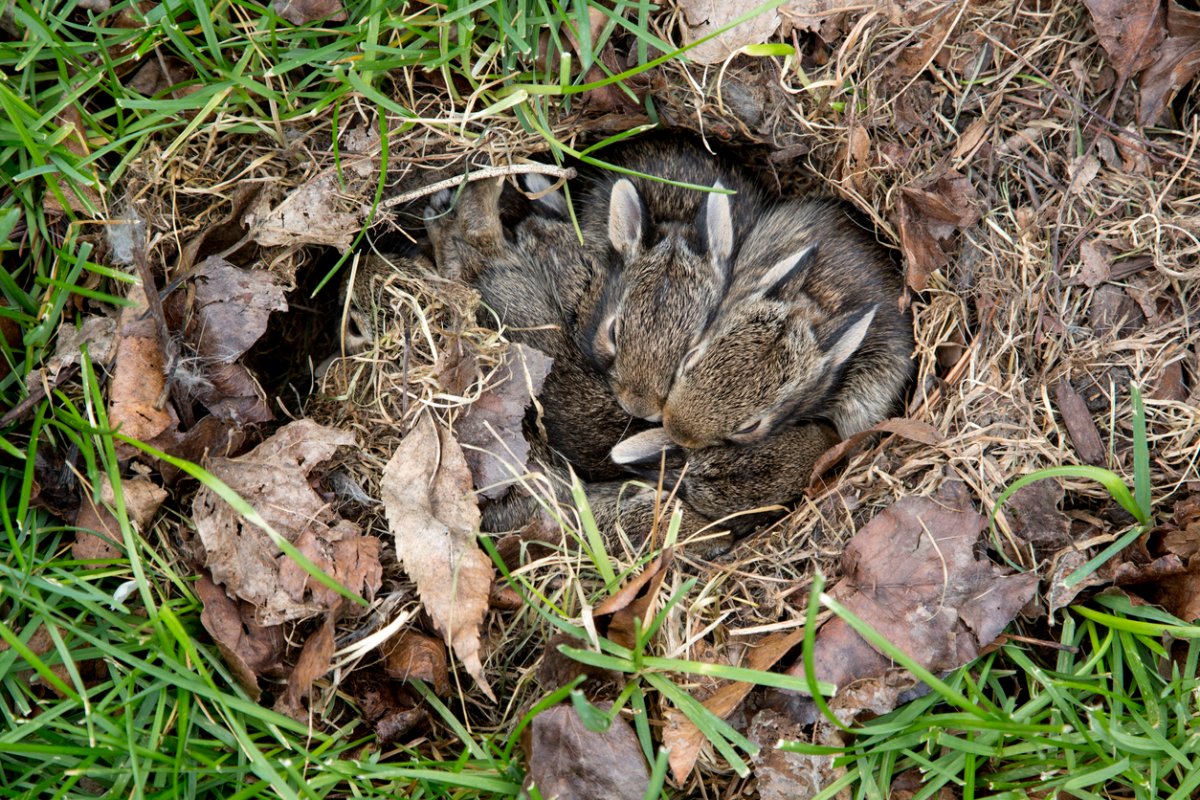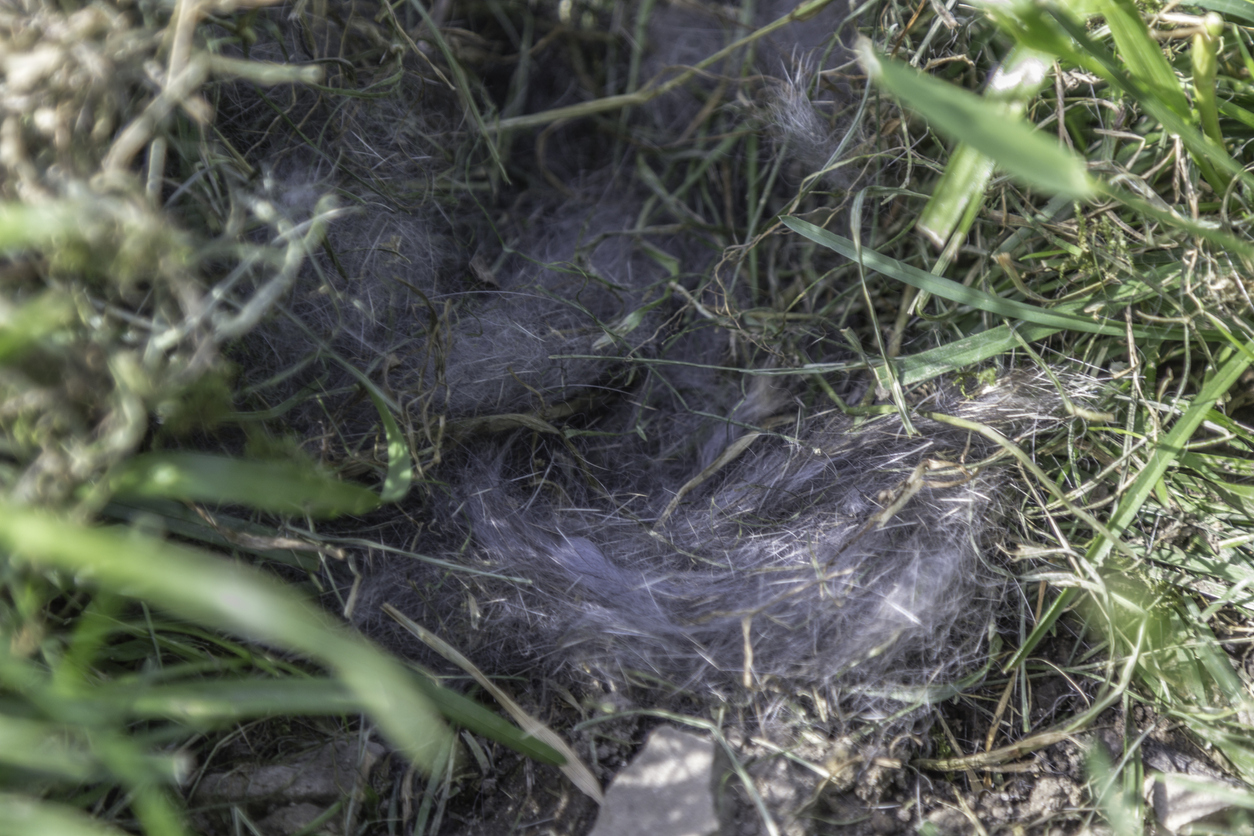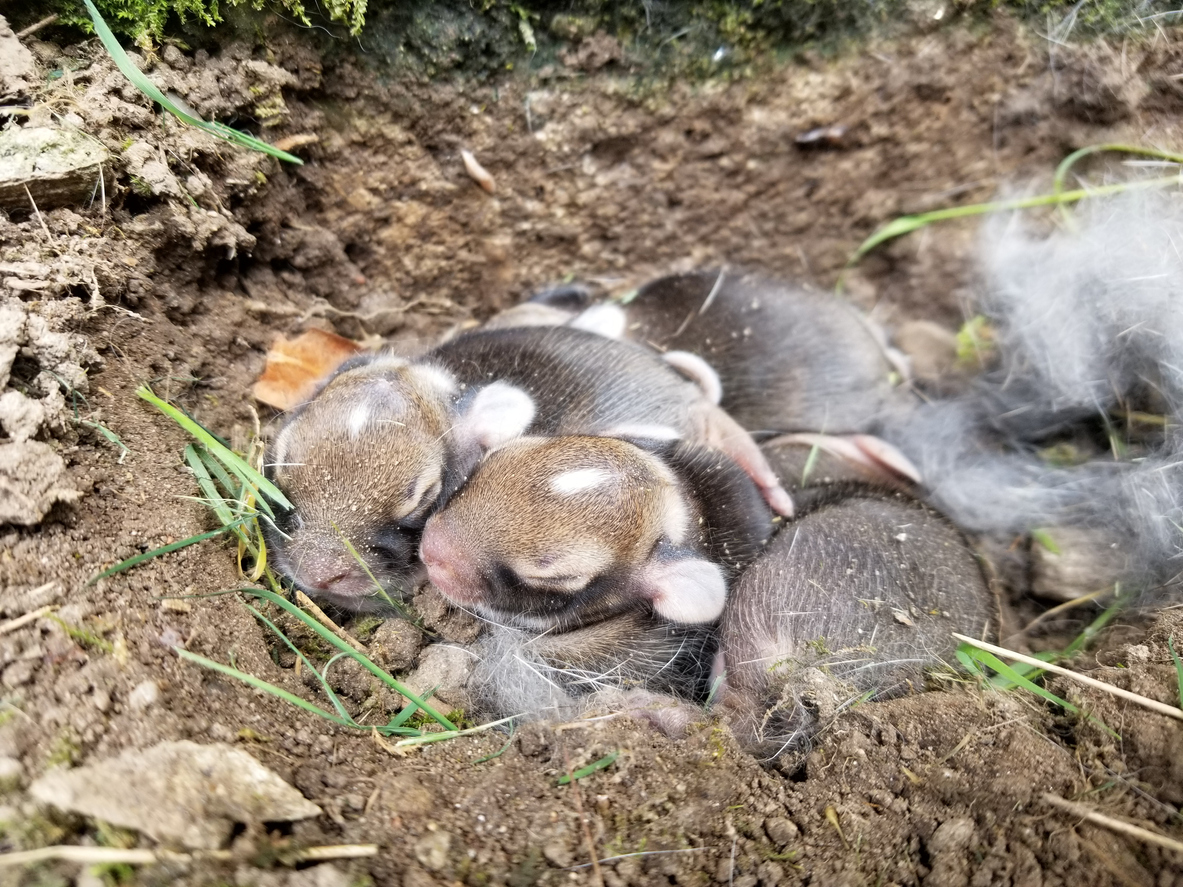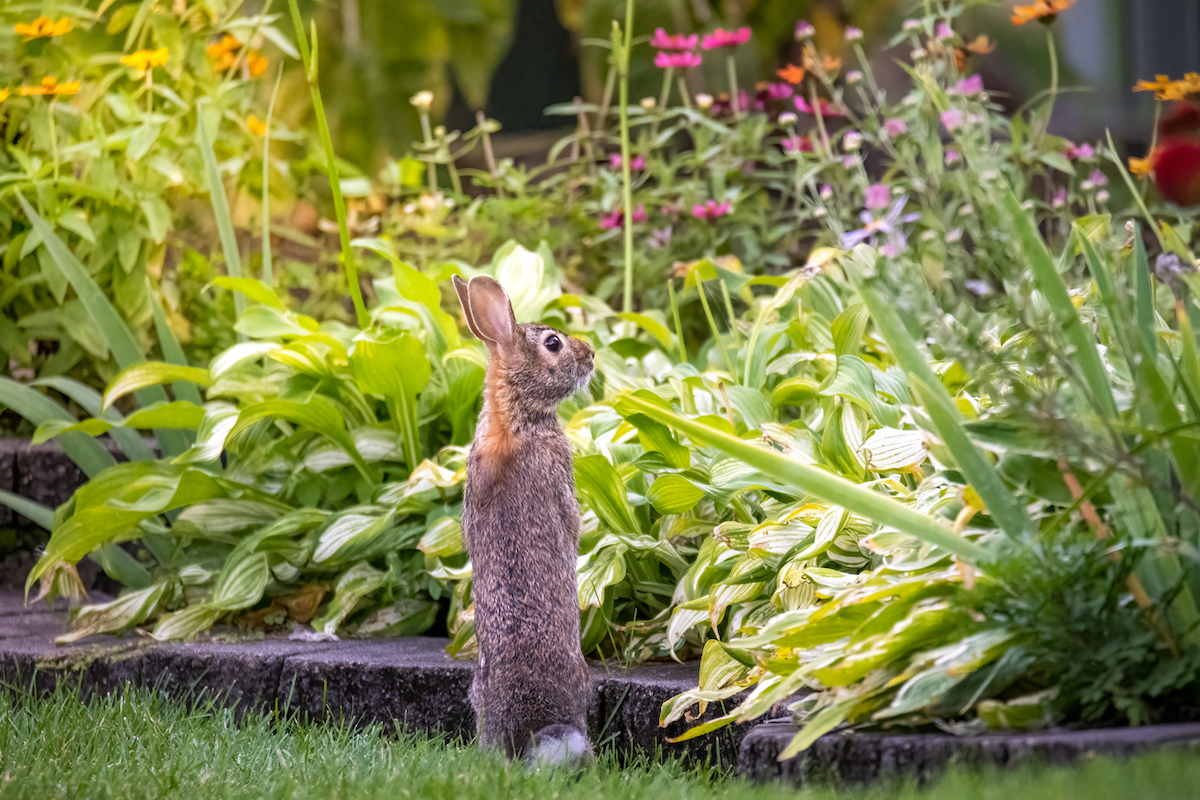

We may earn revenue from the products available on this page and participate in affiliate programs. Learn More ›
If you’re mowing your yard and come upon a patch of dead grass, stop! It’s quite possible that a rabbit’s nest is hiding beneath that browning area of lawn. And, because rabbits do not burrow down very deep when digging their nest, mowing over it could kill the baby bunnies, called kittens, sitting just below the surface.
Eastern Cottontail rabbits, the species most commonly found in the United States, typically reproduce from mid-March through mid-September. According to the Wildlife Center of Virginia, each female rabbit may give birth to as many as four litters each season due to how quickly the kittens mature. Each of these litters will have an average of five kittens, with some having up to 12.
How to Identify a Rabbit Nest

Even if you haven’t seen a rabbit digging holes in the yard, there may still be a nest out of sight somewhere. Rabbit nests can be difficult to spot because the mother rabbit takes care to keep them well hidden from predators. The nests can be located anywhere in a yard; rabbits don’t necessarily build them under a tree or behind a bush, so you may have to walk your property to find one.
That said, a patch of dead grass is often a sign that there are rabbits nesting in the yard. When the mother rabbit digs the shallow nest, it kills the grass, leaving you a hint of what’s hiding beneath it. The mother then covers the shallow hole to better protect her babies from predators. To do this, she may use grass, leaves, or even fur.
If you suspect that you’ve found a rabbit’s nest, approach it very calmly and quietly, so that you don’t frighten the babies that are inside of it. It is unlikely that the mother will be there, as she only feeds her babies twice a day.
What to Do When You Find a Rabbit Nest in Your Yard

If you’ve found baby rabbits in the yard, there are a several things you can do to protect them.
1. Keep your distance from the nest.
The best way to protect the baby rabbits in a nest is to stay away from it. Take care not to walk over the nest or disturb it, as you could inadvertently hurt one of the kittens. Try to keep pets away from the area too, so they don’t try to eat or play with the tiny bunnies.
2. Do not mow within a 10-foot radius of the nest.
Keeping your distance from the nest is especially important when you’re mowing the lawn. Remember, rabbits do not burrow deep into the ground when making their nests. This means that the babies are not very far below the surface and could be injured by the blades of the lawn mower if it passes over the nest.
Avoid mowing within a 10-foot radius of the nest to prevent accidentally hurting one of the kittens. Covering the nest with an upside-down laundry basket when you’re mowing can help you avoid running it over accidentally.
3. Return any stray kittens to the nest.
If you find a stray baby rabbit, you may or may not need to return it to the nest. The kittens only stay in the nest for about 3 weeks, after which time they are old enough to be out on their own. They may only be about the size of a softball at this point, so even some rabbits that look tiny and helpless to you may in fact be independent. However, if you spot a baby bunny that looks smaller than a softball or one that doesn’t have its eyes opened yet, you can carefully pick it up and place it back inside the nest. While you shouldn’t fondle or hold a kitten for any amount of time, you can rest assured that the mother will not reject babies that have been handled by humans and returned to the nest.
4. Contact a wildlife rehabilitator if any of the kittens appear sick or injured.
It may be necessary to contact a wildlife rehabilitator if any of the baby rabbits look sick or injured. If you notice any wounds, see evidence of fly eggs covering the baby (these look like small grains of rice all over the fur), or hear a lot of crying, call a local rehabilitator. You may also be able to bring the bunnies to a veterinarian for care.
5. Verify that the mother rabbit is coming back to feed the kittens.

It is rare for a mother rabbit to abandon her babies. However, because she only tends to them twice a day, you might not see her come back to the nest if you’re not watching it constantly.
If you’d like to verify that the mother has not abandoned the babies, cut a few pieces of string and lay them out over the nest. Form a simple tic-tac-toe pattern with the strings, and check the nest after about 12 hours. If the tic-tac-toe pattern has been disturbed, then the mother came back to take care of her babies. If it looks exactly as you have left it, contact a wildlife rehabilitator, as the mother has likely abandoned the babies.
6. Do not attempt to move the nest.
Even if the rabbit’s nest is in an inconvenient spot, avoid trying to move it. If you try to relocate the nest, you could end up scaring or hurting the kittens inside it. You also could prevent the mother rabbit from being able to find her babies and continue to care for them. Remember, the babies are only in the nest for about 3 weeks, so you won’t have to wait long for them to move on.
7. Consider planting rabbit-resistant plants in your yard.
Rabbit holes in the yard can mar the appearance of your landscape and indicate that bunnies may come munching on your ornamentals and veggies. So it’s smart to plant some rabbit-resistant plants that can help preserve your garden. Plants that are resistant against rabbits may have a particularly strong and unpleasant odor, be spiky, fuzzy, or otherwise unappealing to eat, or have flowers that are toxic to the animals. Options that are attractive to people include zinnias, asters, marigolds, spider flowers, daylilies, coral bells, and snapdragons.
Tips to Deter Rabbits From Nesting on Your Property
Though rabbits are adorable, they can also be destructive. If you don’t want rabbits or rabbit poop in the yard, there are a few measures you can take to get rid of rabbits and deter them from nesting on your property.
- Keep your grass short.
- Allow your dog or cat to roam around your property.
- Try a rabbit repellent spray.
- Scatter Irish Spring Soap or other scents that deter garden pests around your property.
- Place gnomes or other figurines around the yard.
- Set up motion-activated sprinklers.
- Place fencing or chicken wire around your garden beds.
- Plant garlic or onions.
For more advice about what to do when you find animals on your property, check out our article Love ‘Em or Leave ‘Em: What to Do When You Find Wildlife in Your Yard.
